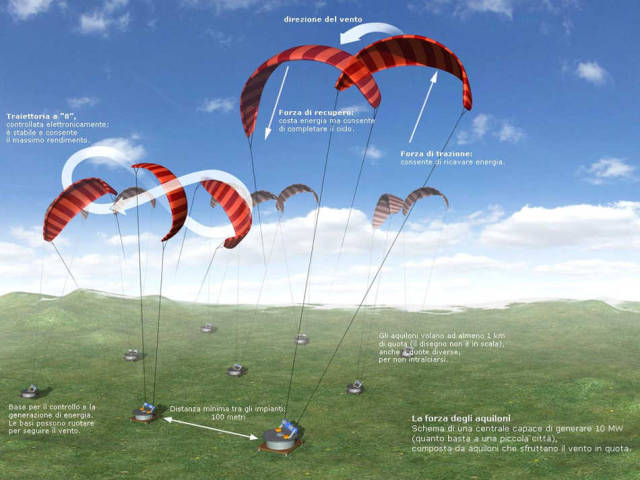High-altitude kites could be more efficient and generate the double energy as traditional wind turbines.
Image credit wikimedia
According to new studies on high-altitude wind power, winds between 300 and 500 meters (984 feet and 1640 feet) are stronger and more consistent than those near the ground, and high altitude kites could in most of the cases replace wind turbines.
“The research is making great strides. By 2018, it will be feasible to replace ground-level wind turbines with the new systems.
A number of hurdles still have to be cleared, both in technical development and on the legal and licensing aspects.”
High-altitude wind power (HAWP) is the harnessing of the power of winds high in the sky by use of tether and cable technology. An atlas of the high-altitude wind power resource has been prepared for all points on Earth. A similar atlas of global assessment was developed at Joby Energy. The results were presented at the first annual Airborne Wind Energy Conference held at Stanford University by Airborne Wind Energy Consortium.
Various mechanisms are proposed for capturing the kinetic energy of winds such as kites, kytoons, aerostats, gliders, gliders with turbines for regenerative soaring, sailplanes with turbines, or other airfoils, including multiple-point building- or terrain-enabled holdings. Once the mechanical energy is derived from the wind’s kinetic energy, then many options are available for using that mechanical energy: direct traction, conversion to electricity aloft or at ground station, conversion to laser or microwave for power beaming to other aircraft or ground receivers.
via inhabitat
source wikipedia






Leave A Comment